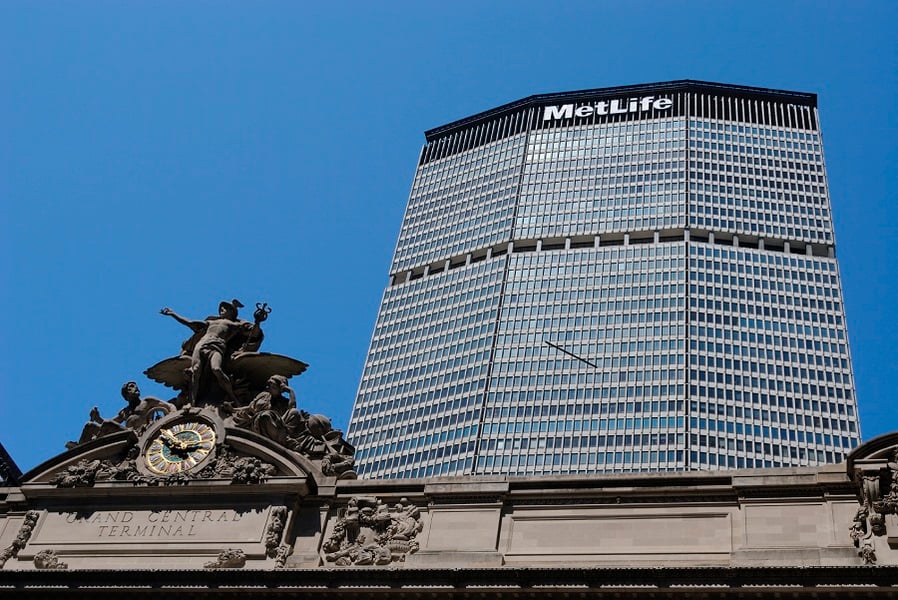

It’s been years since insurance companies dangled buyout offers or contract exchanges to annuity owners – but MetLife is planning to do just that.
The company, which no longer sells individual annuities in the US, will be reaching out to about 5,000 contract holders in the coming months, according to filings made this week with the Securities and Exchange Commission.
The forthcoming offer, which could go into effect in early April, affects clients who own certain Preference Premier VA contracts issued between late 2008 and 2011 that have guaranteed minimum income benefits riders, or GMIBs.
Many advisors will likely recall the flurry of buyout offers that insurance companies like The Hartford, AXA and Transamerica started making more than a decade ago. That trend emerged after insurers amassed VA sales in the aughts that at the time came with favorable guarantees for contract holders that became difficult to hedge amid historically low interest rates.
Now, of course, interest rates are comparably high. And the offer MetLife is proposing is different.
Rather than a lump-sum buyout, the company will take VA account values that are invested in the market and shift them to a fixed interest account. Customers would surrender their GMIBs for what the company is calling an “enhanced income option” that would provide guaranteed retirement income.
“This decision is a win-win for both MetLife and its customers. From a business perspective, MetLife is offering this Enhanced Income Option because given financial market volatility and the cost of hedging to support the GMIB guarantees, the company being released from its obligations under the GMIB Rider will be beneficial,” Michael Schmidt, vice president of retail life and annuity at MetLife, said in a statement provided by a company spokesperson.
“For customers, it allows individuals to adapt to their changing retirement needs. Many may have purchased the GMIB rider protection while still in the accumulation phase of building their retirement savings. Now that they have reached the decumulation phase, they may no longer see value in that protection. This offer allows them the opportunity for increased income, reduced market risk, and lower fees while retaining their available liquidity," Schmidt added.
The enhanced income option will let annuity owners withdraw certain amounts every year without reducing payment amounts available in future years. The regulatory filings made with the SEC did not yet include the fixed-interest-rate percentages and other figures.
However, the company notes in the paperwork that such withdrawal amounts would be equal to or higher than the “dollar-for-dollar” withdrawal rates of the GMIBs. If such withdrawals exhaust the account value, MetLife would issue a supplemental agreement to provide the same amounts for the life of the contract holder, according to the filings.
Customers would benefit by not having to worry about stock market volatility or having to pay certain fees, such as for the GMIB, death benefits and M&E, or mortality and expense.
But that doesn’t mean the deal would be good for everyone – it won’t, and the insurer provides some examples of that in the SEC filing.
GMIBs provide income guarantees for accounts regardless of how the account values change as a result of the returns of the underlying investments in mutual funds, that they hold.
That is a financial risk for MetLife, which in 2017 spun out its US retail business to a new company, BrightHouse Financial, but retained legacy annuity assets and liabilities on its books.
“Our variable annuity business is highly sensitive to equity markets, and a sustained weakness or stagnation in the equity markets may decrease these products’ revenues and earnings,” MetLife stated in its annual report. “Furthermore, certain of our variable annuity products offer guaranteed benefits that increase our potential benefit exposure should equity markets decline or stagnate.”
For contract owners, issues like health, financial security and desire to be invested in the market could help determine whether the offer is in their best interest, the company explained in the filing. But it could be impossible to determine until well after the fact whether one option worked out better than the other.
“I personally get a little peeved about these buyout offers. The insurance companies wanted to play in the living benefits arms race, and now they don’t want to make good on those guarantees. So, they are asking their contract holders to take a lesser benefit, so that the insurance company can be off-the-hook. Not a fan,” Sheryl Moore, chief storyteller at Wink Inc. and Moore Market Intelligence, wrote in an email.
“My perception of why buyouts haven’t been as prevalent lately is because insurance companies have been offloading their underwater VA business by selling those blocks to other insurance companies," Moore added.
Older GMIBs were often attractive to buyers because of the high rollup rates they offered, said Tamiko Toland, owner of Toland Consulting. Still, the rise in interest rates means that the buyout offer could work out for MetLife and some contract owners, she said.
“This one is really different” from past buyout offers made by other insurers, she said. “This is actually shifting the nature of the guarantee.”
For MetLife, “it turns it into something that’s actually much simpler to manage,” Toland said, adding that it can be “an attractive benefit for the policyholder.”

Relationships are key to our business but advisors are often slow to engage in specific activities designed to foster them.

Whichever path you go down, act now while you're still in control.

Pro-bitcoin professionals, however, say the cryptocurrency has ushered in change.

“LPL has evolved significantly over the last decade and still wants to scale up,” says one industry executive.

Survey findings from the Nationwide Retirement Institute offers pearls of planning wisdom from 60- to 65-year-olds, as well as insights into concerns.
Streamline your outreach with Aidentified's AI-driven solutions
This season’s market volatility: Positioning for rate relief, income growth and the AI rebound
